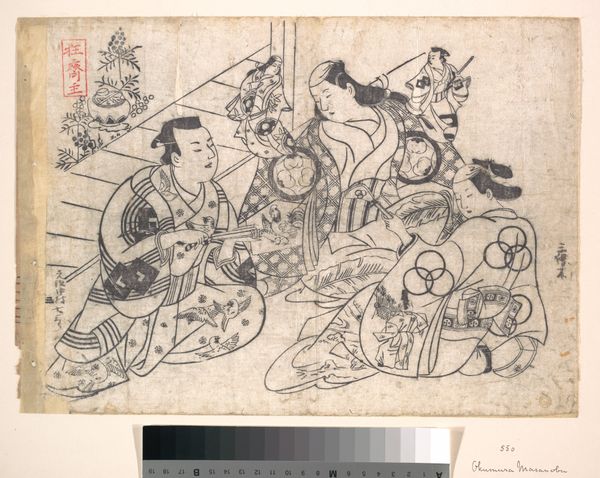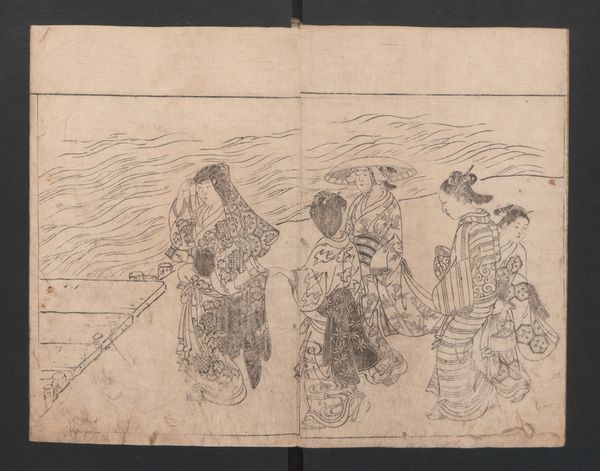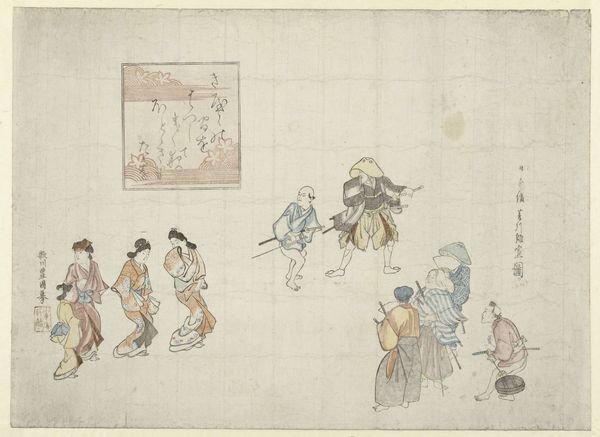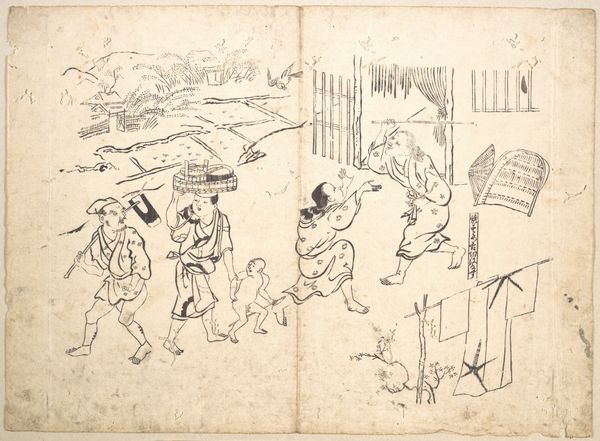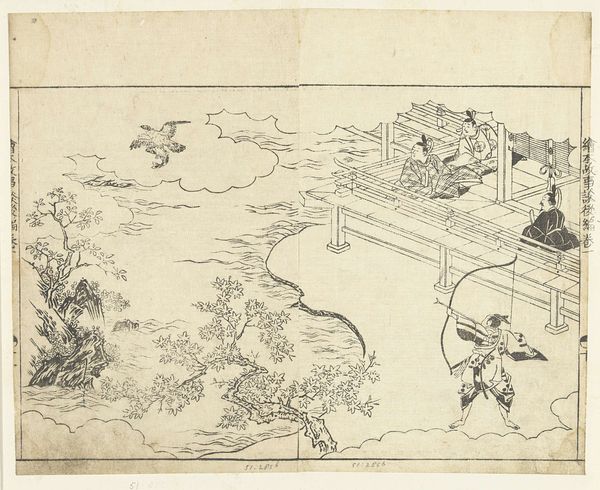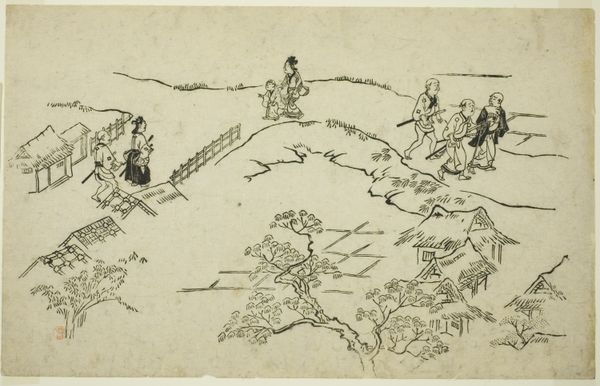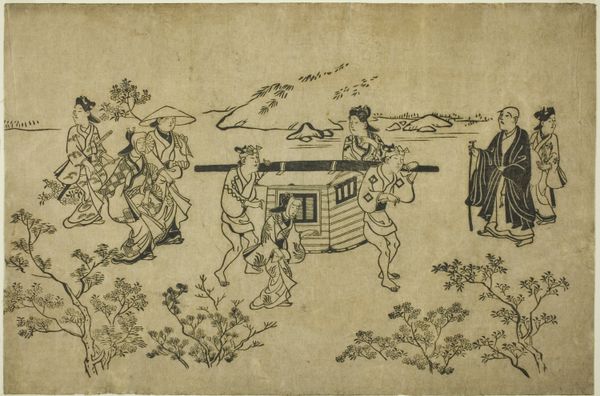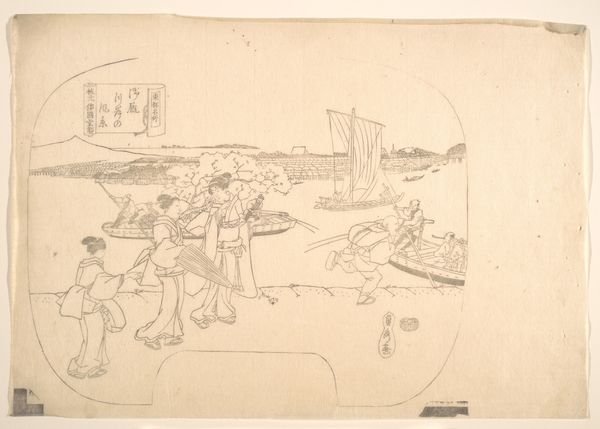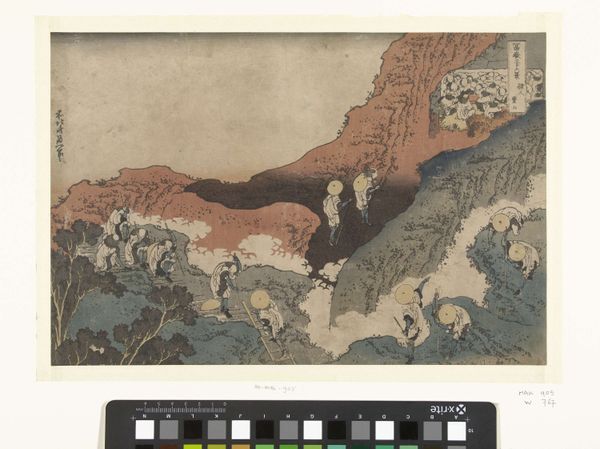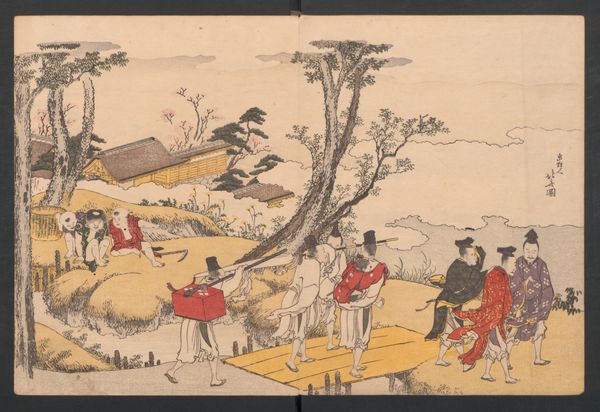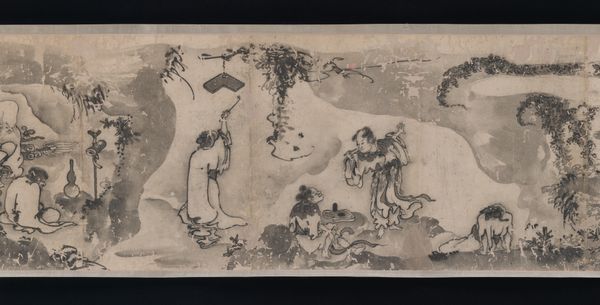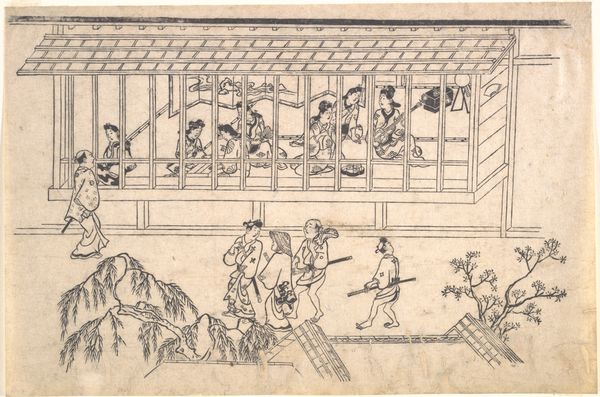
print, woodblock-print
# print
#
asian-art
#
ukiyo-e
#
woodblock-print
#
genre-painting
Dimensions: height 363 mm, width 481 mm
Copyright: Rijks Museum: Open Domain
Editor: This woodblock print is titled "Nachtelijk spelevaren," which translates to "Night Boating Party," and it's by Okumura Masanobu, dating from somewhere between 1705 and 1750. The scene depicts figures relaxing in and near a boat under what seems to be moonlight. It strikes me as an interesting mix of public leisure and perhaps private entertainment. How would you interpret the social dynamics being presented here? Curator: That's a great initial observation. Ukiyo-e prints like this, meaning "pictures of the floating world," are intensely tied to the socio-political landscape of Edo-period Japan. They document the burgeoning merchant class's engagement with pleasure districts and the arts. Consider who is represented: are they samurai, farmers, or merchants? Look at their attire, their activities. This leisure, even depicted, held a political weight. Do you see class signifiers within the image? Editor: I notice some figures seem more elaborately dressed than others. There's someone relaxing on the roof, and those on shore appear to be engaged in more refined activities like tea. Is that significant? Curator: Exactly. These visual cues reinforced the aspirational lifestyle that publishers sold and viewers craved. Mass production of these prints facilitated cultural trends across different social groups. Think about the print's reception; how did seeing images of fashionable people engaging in leisure shape the social expectations and desires of different viewers? Furthermore, how does the imagery serve to define certain gender roles through what is portrayed in this context? Editor: So, it’s not just a snapshot of nightlife, but a reflection of social hierarchies and ambitions, disseminated through mass media. That's a different way of seeing it. Curator: Precisely. And a potent reminder that art never exists in a vacuum. I wonder, then, what impact the production and dissemination of this ukiyo-e tradition would have, and its eventual transformation and adoption of new styles with the advent of modernism? Editor: I'm definitely leaving with a broadened perspective on ukiyo-e and its social impact. Curator: Me too; it always reminds us that an image is a reflection of us all!
Comments
No comments
Be the first to comment and join the conversation on the ultimate creative platform.

